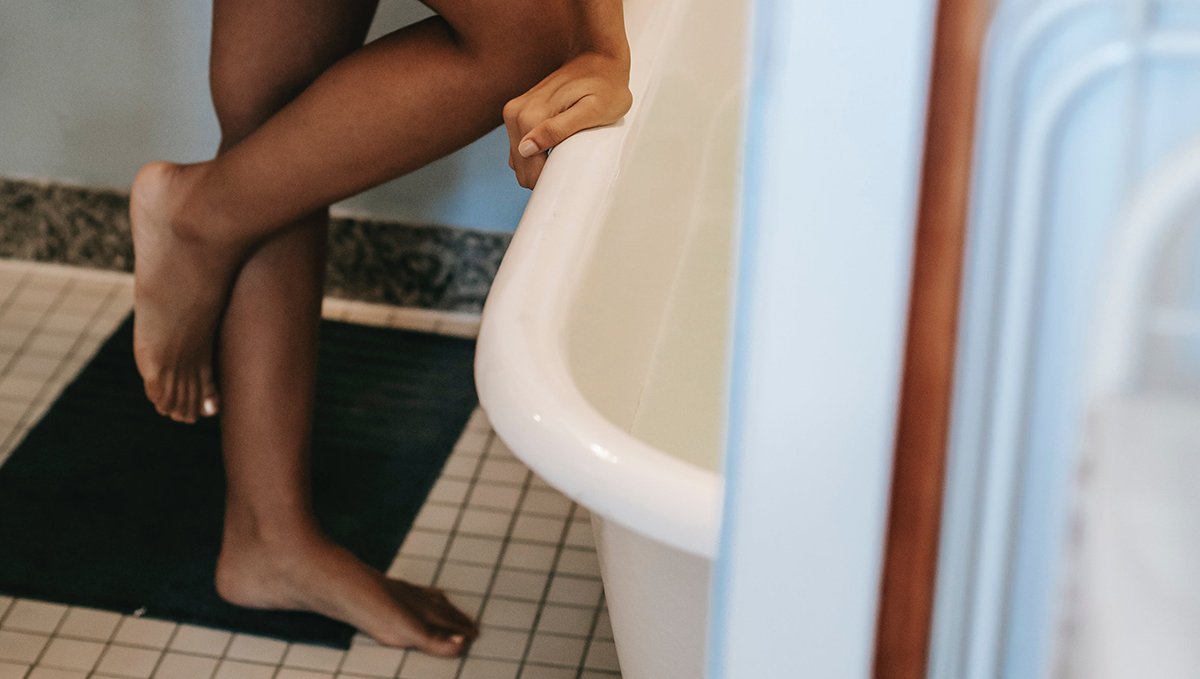
Low temperatures in winter and dry indoor air are the perfect combination for causing dry skin, not only on the face but also on your feet, which can become dry and cracked. This is a common issue for everyone but is more prominent on dark skin where the white or grey colors from dry skin show up more noticeably.
So, if you’re thinking “it me,” it’s probably a good time to learn why this happens and how to heal those dry, cracked heels.
[SEE ALSO: 5 Tips For Hydrated Fall Skin]
What causes dry, cracked heels?
There are a handful of different reasons why you can get cracked heels. They usually appear when there is a lack of moisture and lipids in the skin, which results in a weakened skin barrier that is more susceptible to dryness and fissures. Some contributing factors include:
Improper Footwear: Wearing open-back shoes or sandals for prolonged periods can cause excessive pressure on the heels, leading to calluses and cracks.
Environmental Factors: Exposure to harsh climates, such as low humidity or excessive heat, can lead to moisture loss in the skin, exacerbating heel dryness.
Lifestyle Habits: Standing for extended periods, obesity, and inadequate foot care routines can also contribute to the development of dry, cracked heels.
Skin Conditions: Eczema and psoriasis are chronic skin conditions that can affect individuals with darker skin tones. These conditions can cause dry, scaly patches on the skin, including the heels, leading to cracks.
Foot Fungus (Athlete’s Foot): Fungal infections like athlete’s foot can thrive in warm, moist environments. When left untreated, they can lead to dryness, itching, and cracking of the skin on the heels and between toes.
Other Diseases: Sometimes cracked heels are caused by a medical condition such as diabetes, hypothyroidism, and Sjögren’s syndrome. Always speak with your doctor if you
Best Strategies for Healing Cracked Heels on Dark Skin
Healing cracked heels on dark skin involves having a consistent foot care routine. So here are the best five strategies:
Hydration is Key
We often neglect using skincare on our feet! Don’t forget to moisturize your feet daily using a rich, emollient-based cream containing ingredients like glycerin, shea butter, or hyaluronic acid. These components help lock in moisture and repair the skin’s barrier.
Avoid Disrupting Your Skin Barrier
Using pumice stones and foot scrapers can cause trauma to the skin, leading to increased callus formation. Instead, it is better to opt for ointments containing exfoliant ingredients such as urea, salicylic acid, and alpha hydroxy acids (like lactic acid or glycolic acid). These ingredients work by softening calluses and promoting skin exfoliation.
Soaking and Exfoliation
Once a week, set aside a little time after you shower to treat your feet. The key is to soften your calloused feet in warm water for 10 to 15 minutes and follow up with an exfoliant treatment for better penetration.
Protective Footwear and Socks
Try to limit the time you go barefoot and opt for socks and shoes that fit well and provide adequate support to prevent excessive pressure on your heels.
Medical Consultation
If you suspect you have a medical condition that is causing your dry, cracked heels, or if they do not improve after some care, talk to a board-certified dermatologist who can recommend prescription-strength creams or suggest treatments like professional foot scrubs or paraffin wax therapy.



